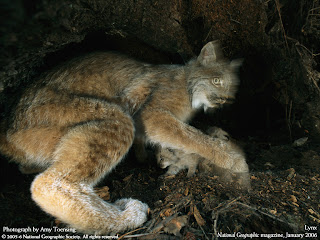What is wildlife conservation and management?
“Wildlife” is a word whose meaning expands ind contracts with the viewpoint(of
the user. Sometimes it is used to include all wild animals and plants. More often it
is restricted to terrestrial vertebrates. In the discipline of wildlife management it
designates free-ranging birds and mammals and that is the way it is used here. Until
about 25 years ago wildlife was synonymous with “game,” those birds and mammals
that were hunted for sport. The management of such species is still an integral part
of wildlife management but increasingly it embraces other aspects such as conservation
of endangered species.
“Wildlife management” may be defined for present purposes as “the management
of wildlife populations in the context of the ecosystem.” That may be too restrictive
for some who would argue that many of the problems of management deal with
people and, therefore, that education, extension, park management, law enforcement,
economics, and land evaluation are legitimate aspects of wildlife management, and
ought to be included within its definition. They have a point, but the expansion of
the definition to take in all these aspects diverts attention from the core around which
management activities are organized: the manipulation or protection of a population
to achieve a goal. Obviously people must be informed as to what is being done, they
must be educated to an understanding of why it is necessary, their opinions must be
canvassed and their behavior may have to be regulated with respect to that goal.
However, the most important task is to choose the right goal and to know enough
about the animals and their habitat to assure its attainment. Hence wildlife management
is restricted here to its literal meaning, thereby emphasizing the core at the
expense of the periphery of the field.
Kinds of management
Wildlife management implies stewardship, that is the looking after of a population.
A population is a group of coexisting individuals of the same species. When stewardship
fails, conservation becomes imperative. Under these circumstances, wildlife
management shifts to remedial or restoration activities.
Wildlife management may be either manipulative or custodial. Manipulative management
does something to a population, either changing its numbers by direct means
or influencing numbers by the indirect means of altering food supply, habitat,
density of predators, or prevalence of disease. Manipulative management is appropriate
when a population is to be harvested, or when it slides to an unacceptably low
density, or when it increases to an unacceptably high level.
Custodial management on the other hand is preventative or protective. It is aimed
at minimizing external influences on the population and its habitat. It is not aimed
necessarily at stabilizing the system but at allowing free rein to the ecological processes
that determine the dynamics of the system. Such management may be appropriate
in a national park where one of the stated goals is to protect ecological processes
and it may be appropriate for conservation of a threatened species where the threat
is of external origin rather than being intrinsic to the system.
Regardless of whether manipulative or custodial management is called for, it is vital
that
A population is a group of coexisting individuals of the same species. When stewardship
fails, conservation becomes imperative. Under these circumstances, wildlife
management shifts to remedial or restoration activities.
Wildlife management may be either manipulative or custodial. Manipulative management
does something to a population, either changing its numbers by direct means
or influencing numbers by the indirect means of altering food supply, habitat,
density of predators, or prevalence of disease. Manipulative management is appropriate
when a population is to be harvested, or when it slides to an unacceptably low
density, or when it increases to an unacceptably high level.
Custodial management on the other hand is preventative or protective. It is aimed
at minimizing external influences on the population and its habitat. It is not aimed
necessarily at stabilizing the system but at allowing free rein to the ecological processes
that determine the dynamics of the system. Such management may be appropriate
in a national park where one of the stated goals is to protect ecological processes
and it may be appropriate for conservation of a threatened species where the threat
is of external origin rather than being intrinsic to the system.
Regardless of whether manipulative or custodial management is called for, it is vital
that
(i) the management problem is identified correctly;
(ii) the goals of management
explicitly address the solution to the problem; and
explicitly address the solution to the problem; and
(iii) criteria for assessing the
success of the management are clearly identified.
success of the management are clearly identified.
Goals of management
A wildlife population may be managed in one of four ways:
1 make it increase;
2 make it decrease;
3 harvest it for a continuing yield;
4 leave it alone but keep an eye on it.
These are the only options available to the manager.
Three decisions are needed:
(i) what is the desired goal;
(ii) which management option is therefore appropriate; and
(iii) by what action is the management option
best achieved? The first decision requires a judgment of value, the others technical
judgments.


